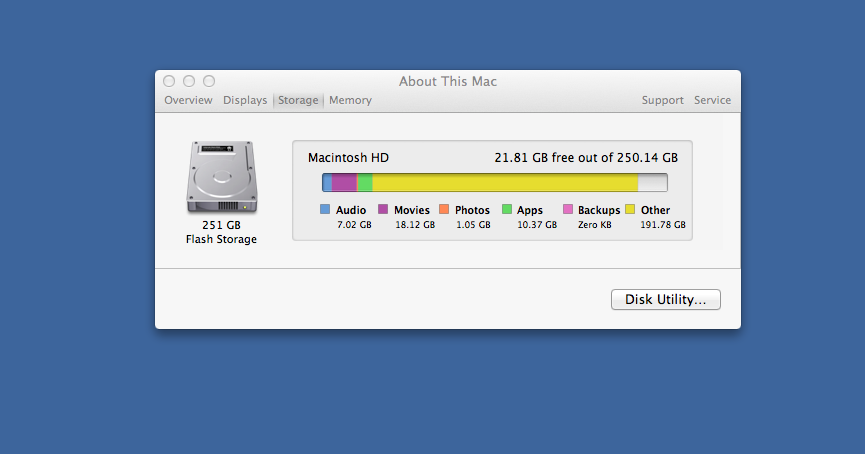

Then expand them when you need to use them again.ĭid you empty the Bin? When you move a file to the Bin, its storage space doesn't become available until you empty the bin. If you don't want to delete certain files, you may be able to save space by compressing them. Enter the file size number for your search. If you don’t see File Size as an option, choose Other. Right click (or, if using a trackpad, press Control while you click) the Trash bin in the Dock and select Empty Trash (Source) 2. Select Empty Trash from the top right of the box that appears. Right-click the Trash bin on the far right of the Dock. Check the Users folder on Macintosh HD for any shared files that you no longer need to share. Follow these specific steps to search for large files and free up hard drive space on any Mac computer. 4 manual ways to free up disk space on Mac.If your Mac is set up for multiple users, delete users who no longer need access to your Mac. Or ask them to follow the steps in this article after logging in to their user account. Also check the Users folder on Macintosh HD for any undeleted data belonging to deleted users.If you use your Mac to back up your iPhone or iPad, you can delete old backups.Also choose Mailbox > Erase Deleted Items.

If you use the Mail app for your email, choose Mailbox > Erase Junk Mail from the menu bar in Mail.Delete files in your Downloads folder. Open this folder from the Dock or by choosing Go > Downloads from the menu bar in the Finder. Click on the Apple icon from the menu bar, select About This Mac, and go to the Storage section.Delete music, films, podcasts or other media, especially if it's media that you can stream or download again as needed.You can also delete files that you no longer need. If you have another storage device, such as an external drive connected to your Mac, you can move files to that device. Media files, such as photos and videos, can use a lot of storage space, so you can take steps such as these:


 0 kommentar(er)
0 kommentar(er)
